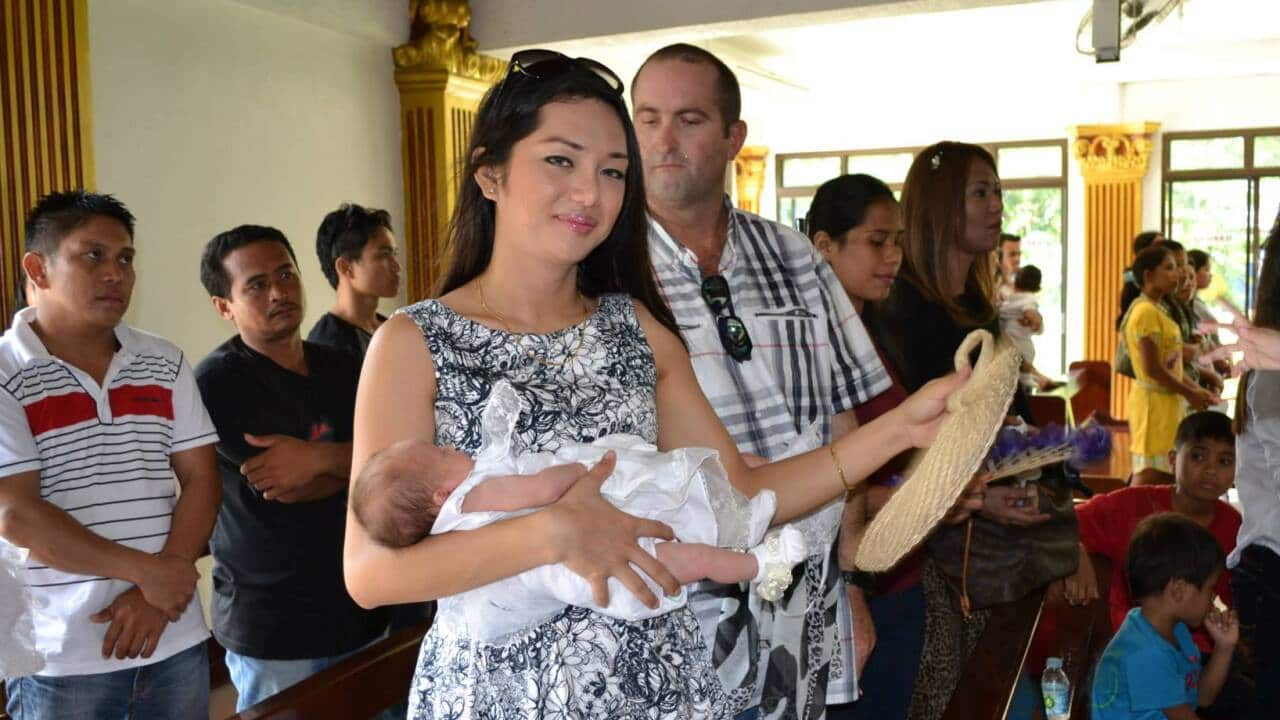Key Points
- Ramfel Pacifico-Huggins transitioned to a woman when she was 21 years old.
- Pacifico-Huggins’ 11-year-old daughter was conceived via surrogacy.
- The Catholic church announced condemnation of gender studies, gender-affirming surgery and surrogacy.

She said she started realising she was born in the “wrong” body when she was around seven.
I always leaned towards playing with girls instead of boys. I just always saw myself as a girl and I would pretend I had girl parts instead of boy parts
Ramfel Pacifico-Huggins
“My mum would always dress me in girls’ clothes as well.

Pacifico-Huggins started her transition when she was 21. Credit: Sofiya Huggins
“So when I started transitioning when I was 21, it wasn’t something surprising to my family. It was just a given.”

For Pacifico-Huggins, transitioning meant hormone treatment and a total physical and lifestyle change. Credit: Sofiya Huggins
For Pacifico-Huggins, transitioning meant hormone treatments and a total physical and lifestyle change.
I went through a depression due to an imbalance, and my sexual urges were just not there. The treatments changed me both inside and out.
Ramfel Pacifico-Huggins
“I was working in Japan when I started hormone treatments and I didn’t have a support system then; but because I worked so much, I didn’t have a lot of time to sit with my feelings.”
Desire to become a mum
Pacifico-Huggins met her ex-partner in Western Australia where she was pursuing a postgraduate degree. The couple would later move to Queensland.

Ramfel Pacifico-Huggins had a commitment ceremony with her ex-partner in 2010. Credit: Sofiya Huggins
“I had a commitment ceremony with my ex-partner in 2010. We weren’t married, but we considered ourselves as life partners,” Pacifico-Huggins said.
When we got together, I knew I wanted to give him a child and there was no other way to do that but to have someone else carry the child for me.
Ramfel Pacifico-Huggins
“When she said ‘yes’, it was then that I looked into surrogacy in the Philippines because the process wasn’t allowed in Queensland then.”
Surrogacy journey begins
The woman who agreed to be our surrogate was actually a neighbour of mine in Cebu. She already had three kids of her own, which made her a good candidate to carry our baby.
Ramfel Pacifico-Huggins
“I prayed hard and said to God that if my daughter survived her nine-month journey, I would name her after ‘Mary’, Mother of God. That’s why I called her Maia, after our Lady.
After the birth and the first hour of breastfeeding, I was the one who took care of Maia. I was her mother.
Ramfel Pacifico-Huggins
“She had to stay in the nursery for an extended period of time and I was the one who was there with her, feeding her and caring for her.”

Pacifico-Huggins with her baby daughter, Maia, who was carried by a surrogate. Credit: Sofiya Huggins
Pacifico-Huggins and her ex-partner would live in the Philippines for another six months before heading back to Australia with their child.
“When we were at the airport to leave for Australia, that’s when I saw Maia’s biological mother cry … of course, she carried her for nine months, so it was really, really hard,” she said.
It was emotional, but she knew I was not going to conceal her identity from my daughter. I was very grateful to her.
Ramfel Pacifico-Huggins
“I’m actually still very close to Maia’s biological mother. We’ve kept in touch and my daughter knows her.”
Co-parenting with her ex-partner
“It was only fair that her biological mother be on her birth certificate. My name is only on her baptismal certificate as her godmother,” she said.
I looked into legally adopting her, but the process is long and expensive; but she knows and I know that I’m her mum.
Ramfel Pacifico-Huggins
“He’s a good dad. Maia lives with him in Queensland, while I’m in Melbourne,” she said.

Ramfel Pacifico-Huggins’ daughter, Maia (L), lives with her ex-partner in Queensland. Credit: Sofiya Huggins
“I miss her and I think about her every day. I can’t wait to see her again each time.
“I only ask the good Lord that I will live long enough to see her grow up and prosper. All I want is for her to be happy. That’s one of the dreams that I have.”
Church’s stance on surrogacy and trans people
Regarding surrogacy, the Vatican stated,
The path to peace calls for respect for life, for every human life, starting with the life of the unborn child in the mother’s womb, which cannot be suppressed or turned into an object of trafficking.
The Vatican, from Dignitas Infinita
Gender-affirming surgery and gender theory are also condemned, with the church stating,
We cannot separate the masculine and the feminine from God’s work of creation…and where biological elements exist which are impossible to ignore.
The Vatican, from Dignitas Infinita
“It’s a little bit ironic where gender reassignment and surrogacy are equalised or tantamount to abortion and euthanasia,” she said.
Abortion and euthanasia are about death. Gender reassignment is about rebirth and surrogacy is about bringing life to this world. Why would they be equal?
Ramfel Pacifico-Huggins
“The church is made up of well-educated individuals and I do believe they are guided; but also because of tradition, they don’t instantly adapt to the modern world,” she said.

A large part of Pacifico-Huggins’ identity is her Catholic faith. Credit: Sofiya Huggins
“I respect their arguments and message, but I believe the church evolves and that’s how it survives. Change will be gradual though.
“As for me and my life, I am who I am, and I know for certain that I helped bring my child into this world because of love.”
